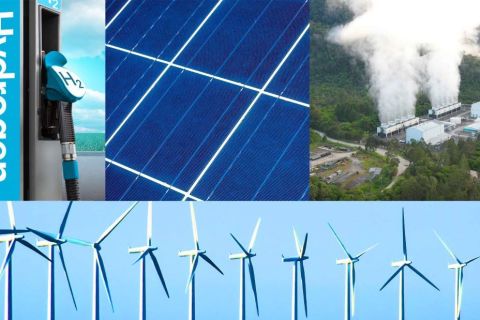
Today, the mighty Haynesville shale is the largest producing gas play in North America. It makes some 6.5 billion cubic feet per day, a remarkable rise from zero production in 2007. Indeed, this upstart shale-gas play now accounts for 10% of total daily U.S. gas production.
And yet, the book on the Haynesville is that it's uneconomic in today's gas market. It’s a dry-gas play, and the deep, hot and highly pressured formation requires very costly wells. Rigs have been skedaddling from the North Louisiana and East Texas environs of the Haynesville to such juicy liquids plays as the South Texas Eagle Ford.
Not everyone shares a dim view of the Haynesville, however. A major proponent of the play is Calgary-based Encana Corp. The Canadian senior has applied its formidable skill set to its prime Haynesville land position, and it claims that the results speak for themselves.
In an early November conference call with investors and shareholders, Encana talked up the Haynesville, and perhaps changed a few minds about the realities of this amazing resource play.
The Haynesville has led Encana's recent corporate production growth. "For 2011, we expect to average 505 million cubic feet per day, more than 50 times what we were producing just three short years ago," said Eric March, Encana executive vice president. "The Haynesville shale represents extraordinary opportunity."
Engineering efficiency, advanced horizontal drilling and completion technologies and lower cost structures are making the Haynesville a highly competitive, economically robust resource play that has a long-term future, he maintained.
In recent years, Encana worked to retain its core leasehold. The company has 250,000 net acres in the heart of the Haynes - ville and mid-Bossier plays, and the majority of that is now held by production (HBP), said Paul Sander, vice president, Midcontinent business unit. Now that the HBP grind is largely behind it, Encana is applying its resource-play hub development strategy to the Haynesville.
The approach calls for drilling fewer, longer laterals at optimum spacings and employing lower-cost, higher-recovery completions. Already, Encana has driven costs down to $3.70 per thousand cubic feet (Mcf) in the Haynesville, a remarkable drop from more than $5.50 per Mcf in 2008. Going forward, Encana targets supply costs of less than $3 per Mcf.
"We expect to achieve this through a combination of improved well performance and reduced cost structures, primarily through the implementation of our resource-play hub model," said Sander.
Pad drilling and increased efficiencies are pillars of Encana's program. In its Credence area, where it owns 100% working interest, Encana has reduced drill times by 38% and drill costs by 30% since 2009. Completion efficiency and costs have also improved, even as well lengths and completion intensity have increased.
Since the first quarter of 2010, the number of frac jobs Encana has pumped per month has doubled. "Most recently, we pumped as many as 145 completion stages from a single crew in a single month," said Sander. "And more stages mean lower average costs."
The wells are also getting better. Encana has tweaked its designs to place more sand in the completions network to reduce the impact of embedded proppant, and that has translated to improved well performance. Declines have also moderated. "It is less costly for us to invest in bigger completions on fewer wells than it is for us to drill more wells with smaller completions," said Sander. "Ultimately, we are heading to 106-acre spaced wells or even 160-acre spaced wells."
On the production front, Encana has had good success with slowback, a practice that limits a well's production rate to keep the surface pressure drop to less than 25 psi per day. Wells produced with the slowback method appear to have higher estimated ultimate recoveries, on the order of 5%. "Around one-half of our wells employed this practice in 2011 and it is now our standard practice," noted Sander.
The upshot of all Encana's engineering, innovation and best practices is an affirmation that the Haynesville is truly a top-tier, highly competitive asset, said the company.
Recommended Reading
Energy Transition in Motion (Week of Sept. 13, 2024)
2024-09-13 - Here is a look at some of this week’s renewable energy news, including an agreement between Exxon Mobil and Mitsubishi Corp. concerning ammonia from a planned hydrogen facility in Texas.
Exxon Mobil Ramps Up $400MM CCS Project in Wyoming
2024-10-03 - The $400 million project will expand capture capacity by up to about 1.2 million metric tons of CO2 per year, Exxon Mobil said.
ADNOC to Acquire Stake in Exxon’s Hydrogen, Ammonia Facility
2024-09-04 - Exxon’s Baytown facility is expected to produce up to 1 Bcf of hydrogen daily and more than 1 million tons of low-carbon ammonia per year, if it receives required regulatory permits and government policy support.
Energy Transition in Motion (Week of Oct. 25, 2024)
2024-10-25 - Here is a look at some of this week’s renewable energy news, including a U.S. Geological Survey-led study pointing to massive estimated lithium reserves in the Arkansas Smackover.
Trial and Error: CCS Tries Out Multiple Approaches to Get Ball Rolling
2024-10-30 - Is carbon capture and sequestration about to turn the corner? Some obstacles may stand in the way.
Comments
Add new comment
This conversation is moderated according to Hart Energy community rules. Please read the rules before joining the discussion. If you’re experiencing any technical problems, please contact our customer care team.





